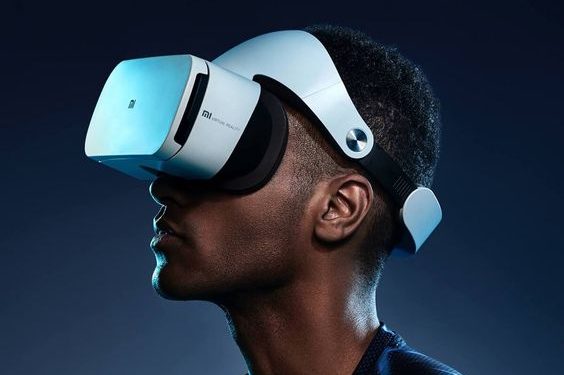Technology has always been at the forefront of human advancement, and it continues to amaze us with its rapid pace of growth. In this age of modernization, we are witnessing a fascinating era where technology is revolutionizing everything around us. From smart homes to self-driving cars, from virtual reality gaming to artificial intelligence-driven machines – technology is taking over every aspect of our lives. In this blog post, we will delve into five technological innovations that have the potential to transform and redefine the way we live forever. So buckle up and get ready for a wild ride through the tech world!
The Internet of Things
The Internet of Things (IoT) is the interconnected network of devices, vehicles, and appliances that communicate with each other over the internet. This technology has been around for a while now, but it’s only in recent years that we’ve begun to see its true potential.
Imagine waking up in the morning to your coffee brewing automatically as soon as you step out of bed because your smartwatch told your coffee maker you’re awake. Or imagine coming home from work to find your thermostat adjusted perfectly to your preferred temperature before even entering the house!
The IoT can make all this happen and more, offering us a level of convenience that was once thought impossible. It can improve our productivity, reduce energy consumption and provide personalized experiences based on our preferences or habits.
However, with great power comes great responsibility – security risks increase when everything is connected to the internet. As such, there needs to be constant vigilance against hackers who want access to sensitive information through these devices.
Though there are still some challenges ahead for IoT development; we cannot deny its potential benefits in making our lives easier!
3D Printing
3D printing is one of the most fascinating technological innovations that has come up in recent years. It is a process by which three-dimensional objects are created layer by layer, from a digital file. This technology has revolutionized many industries such as fashion, healthcare, and even construction.
One of the benefits of 3D printing is its cost-effectiveness. The traditional method for creating prototypes or small-scale production can be expensive since they require special molds or machines to produce them. With 3D printing, it only requires setting up a design on a computer and creating it with the printer.
Another advantage is its ability to create complex geometries that would otherwise have been impossible using traditional methods. 3D printers can create intricate designs with ease and precision regardless of their complexity level.
Moreover, there’s an eco-friendly aspect to this technology since it reduces waste compared to traditional manufacturing methods where excess material may be discarded after use or when errors occur during production.
The potential applications for 3D printing are endless; from producing prosthetics for medical purposes to rapid prototyping in various industries like automotive engineering and aerospace design.
Overall, 3D printing presents new opportunities for innovation across all sectors due to its versatility and flexibility in terms of product creation while also providing economic benefits over conventional manufacturing processes
Virtual Reality
Virtual Reality (VR) is a technology that has been around for quite some time, but it’s only recently started to gain traction in the mainstream. With VR, users can immerse themselves in a digital world and interact with their surroundings using special headsets and controllers.
One of the most exciting things about VR is its potential for entertainment. Gamers can step inside their favorite games and experience them like never before – imagine exploring an ancient temple as Indiana Jones or battling zombies in a post-apocalyptic wasteland.
But virtual reality isn’t just limited to gaming. It could also revolutionize industries such as education, healthcare, and even real estate. Imagine taking virtual tours of college campuses or practicing complex medical procedures without any risk to patients.
Of course, there are still challenges that need to be overcome before VR becomes truly ubiquitous. Headset prices remain high, and not all computers have enough power to run demanding applications smoothly.
However, over time we can expect these issues to be resolved as developers continue pushing the boundaries of what’s possible with this innovative technology.
Augmented Reality
Augmented Reality (AR) is an innovative technology that has the potential to revolutionize the way we live. Unlike Virtual Reality, which creates a whole new world around us, AR enhances our existing environment by overlaying digital information onto it.
One of the most significant advantages of AR is its ability to enhance visual communication. With AR tools and apps, designers can create interactive and immersive experiences for their clients in real-time. Architects can use AR to visualize building designs in situ and make adjustments accordingly.
AR also has enormous potential in education and training. Students can use AR-powered textbooks that bring static images to life or visit virtual museums where they can interact with exhibits in ways previously impossible.
Apart from these applications, augmented reality also finds its place in gaming as well as marketing industries providing unique experiences for users/customers through interactive ads or games.
As this technology continues to evolve at a rapid pace, it’s exciting to think about what possibilities Augmented Reality could hold for the future!
Artificial Intelligence
As we can see, technology is constantly evolving and changing the way we live our lives. The five tech innovations discussed in this article are just a few examples of how technology is transforming our world.
Artificial intelligence (AI) has the potential to revolutionize multiple industries and completely change the way we interact with machines. From self-driving cars to automated customer service chatbots, AI is already making an impact on our daily lives.
However, it’s important to remember that these advancements bring both benefits and challenges. As with any new technology, there are concerns about job displacement and privacy issues.
It’s up to us as a society to ensure that these technologies are used ethically and responsibly for the betterment of humanity. By embracing innovation while also being mindful of its potential pitfalls, we can build a brighter future for all.
















